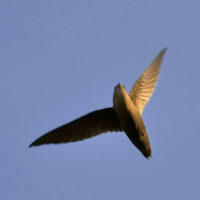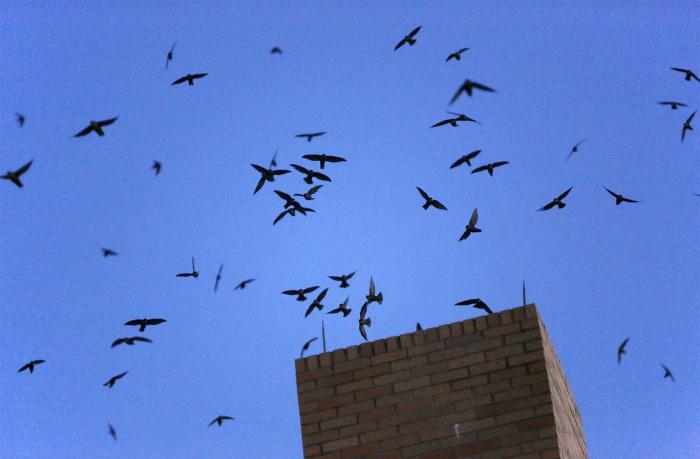Natural phenomena are happening all around us. You just need to know where and when to look. The annual chimney swift migration is as massive and incredible as any on earth. These birds travel 6,000 miles between north and south America annually.
The Natural History Society of Maryland in partnership with the Baltimore Bird Club and the Maryland Bird Conservation Partnership is hosting A Swift Night out on September 26 (rain date September 27) at its headquarters in Baltimore. A Swift Night Out is a continent-wide effort to raise awareness about and encourage interest in Chimney Swifts.
Chimney Swifts are Neotropical migrants, meaning they travel to North America in the summer to breed and migrate back south to South America to spend the winter. During the breeding season, birds remain in pairs or small family groups, but during migration, they may amass in the thousands. Their unique foot structure makes it impossible for them to stand or perch. So they fly – covering up to 500 miles a day – eating and drinking on the fly. When they do stop in the evenings to roost, they must find a protected structure – one where they can cling to walls. Traditionally, that was hollowed out trees. Today, that means chimneys and human interactions.
Due to loss in nesting and roosting habitat and a decline in insect populations, use of pesticides and climate change, swift populations have decreased by 72% since the 1960’s. To learn more about these amazing birds, please view the resent presentation on Chimney Swifts given by Chris Eberly of the Maryland Conservation Bird Partnership. Please SUBSCRIBE to the NHSM YouTube channel.
Surveys begin 30 minutes before sunset and end when the last swift enters the chimney. Surveying for swifts is fun, easy, and suitable for all ages. Bring a camp chair and some snacks to enjoy viewing the birds as they fly overhead! NHSM volunteers have been scouting out two chimneys in Overlea, St. Michaels Church School and Glenmount School. Check out this YouTube Video
This is nature. We are unable to predict how many birds we will see, but early recognizance missions have counted over 600 birds. The event is free, but for planning purposes, please RSVP
If you can’t make it out to see us – try to find roosts near where you are. Potential roost locations are fun to search for — start by looking for large, uncapped chimneys on historical buildings, old factories, schools, churches, courthouses, or libraries.


